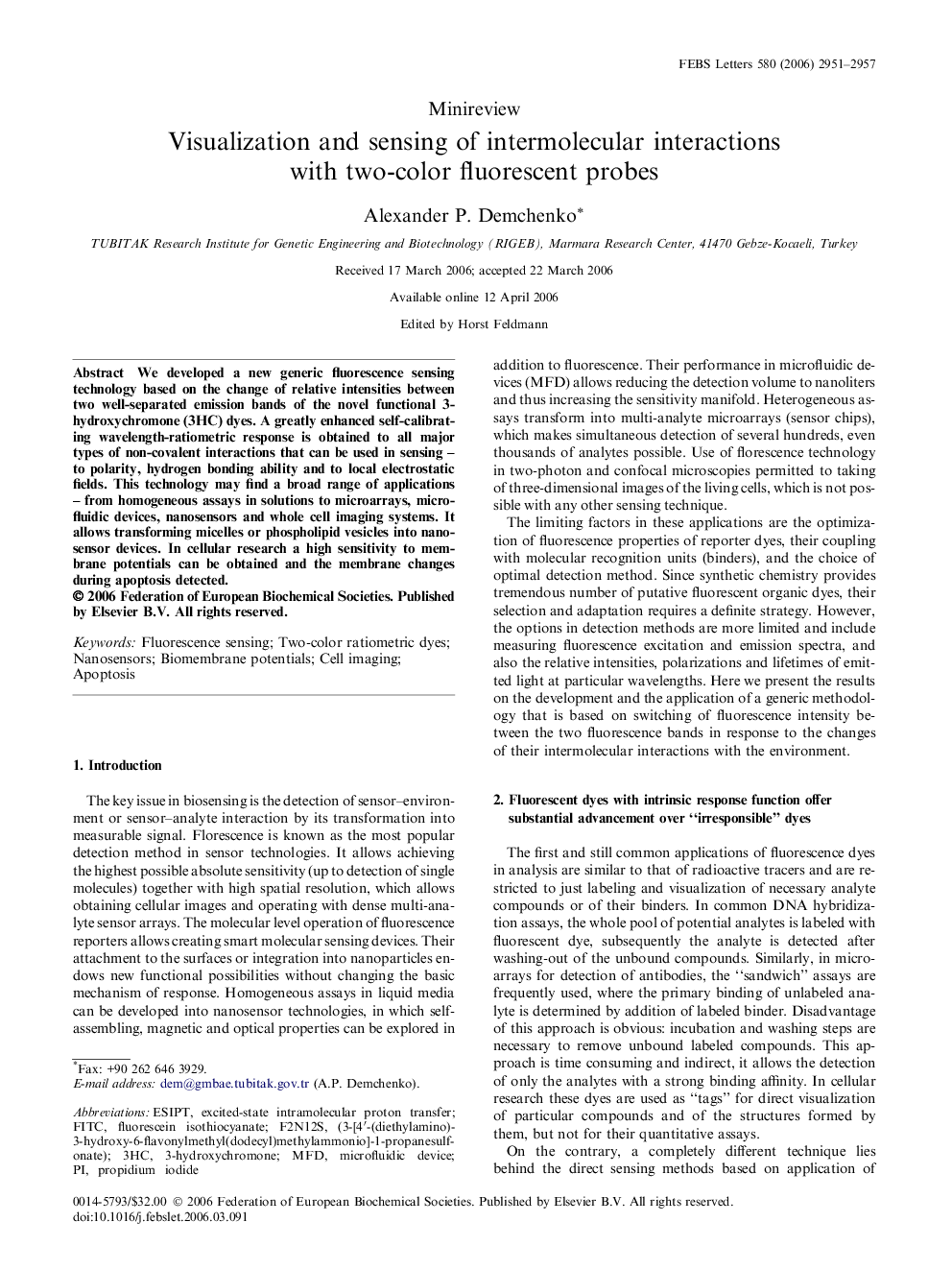| Article ID | Journal | Published Year | Pages | File Type |
|---|---|---|---|---|
| 2052758 | FEBS Letters | 2006 | 7 Pages |
We developed a new generic fluorescence sensing technology based on the change of relative intensities between two well-separated emission bands of the novel functional 3-hydroxychromone (3HC) dyes. A greatly enhanced self-calibrating wavelength-ratiometric response is obtained to all major types of non-covalent interactions that can be used in sensing – to polarity, hydrogen bonding ability and to local electrostatic fields. This technology may find a broad range of applications – from homogeneous assays in solutions to microarrays, microfluidic devices, nanosensors and whole cell imaging systems. It allows transforming micelles or phospholipid vesicles into nanosensor devices. In cellular research a high sensitivity to membrane potentials can be obtained and the membrane changes during apoptosis detected.
